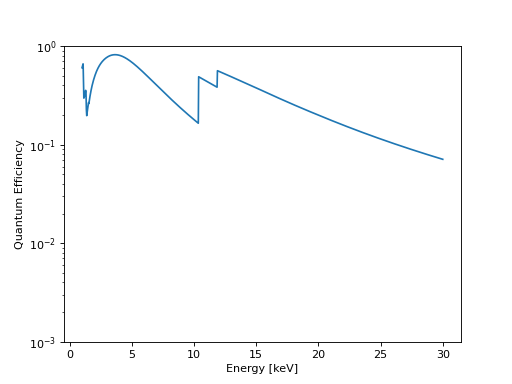Defining your own custom material¶
Though the compounds list provided in this package is extensive it may not provide the exact material that you are interested in. It easily possible to define your own material if you know it’s chemical composition. The following example, we investigate the absorption of a Gallium Arsenide (GaAs) detector in the same configuration as that in G. Lioliou & A.M. Barnett (2016). Compare our plot with their Figure 1.
import astropy.units as u
import numpy as np
from matplotlib import pyplot as plt
from roentgen.absorption import Material
gaas_deadlayer = Material({'Ga': 0.518, 'As': 0.482},
density=5.32*u.g/u.cm**3, thickness=500*u.nm)
gaas_detector = Material({'Ga': 0.518, 'As': 0.482},
density=5.32*u.g/u.cm**3, thickness=10000*u.nm)
e = np.linspace(1, 30, 1000)*u.keV
plt.plot(e, gaas_detector.absorption(e) * gaas_deadlayer.transmission(e))
plt.xlabel(f'Energy [{e.unit}]')
plt.ylabel('Quantum Efficiency')
plt.ylim(0.001, 1)
plt.yscale('log')
plt.show()
(Source code, png, hires.png, pdf)
